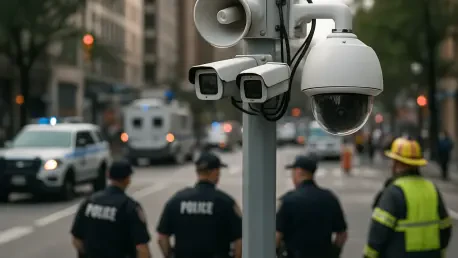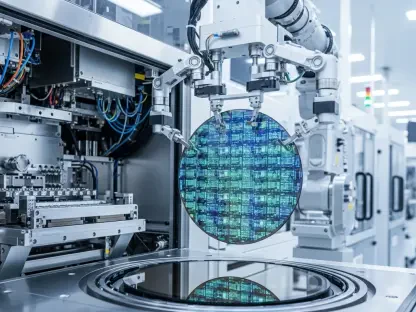In the rapidly evolving landscape of security and public safety, AI is playing a transformative role by elevating surveillance systems from passive monitoring tools to proactive defenders against threats. The integration of artificial intelligence into surveillance technology represents a paradigm shift, leveraging complex algorithms and machine learning capabilities to identify and mitigate risks before they escalate into incidents. Traditional surveillance methods, which primarily depended on fixed cameras and human operators, are now enhanced by AI’s sophisticated analysis of vast data streams. The shift from reactive surveillance measures to proactive threat detection exemplifies how AI is revolutionizing public safety.
AI’s ability to process and analyze patterns in real-time has drastically increased its utility in surveillance applications. These systems are now equipped with machine learning models that evaluate behaviors and predict potential security breaches, thus promising a future where incidents can be intercepted at the earliest stages. With advanced pattern recognition, AI can distinguish irregular activities and suggest prompt interventions, enhancing security personnel’s efficiency and response times. This advancement in situational awareness supports a safer environment, ensuring that both public and private sectors can rely on heightened surveillance capabilities.
AI in Proactive Threat Detection
AI-powered surveillance systems stand out due to their proactive nature, which emphasizes identifying and addressing threats before they culminate in harmful incidents. Unlike traditional systems reliant on human oversight, AI leverages neural networks, computer vision, and multimodal AI to detect and predict abnormalities in real-time. This futuristic approach integrates multiple data streams, such as visual and auditory inputs, enhancing the accuracy of threat assessments. The predictive analytics employed by these systems echo methodologies found in cybersecurity, where anomaly detection plays a critical role in forestalling potential risks.
One remarkable capability of AI surveillance is in behavior recognition, where sophisticated algorithms dissect subtle postures and micro-expressions to identify malicious intent swiftly. Traditionally, recognizing such nuances would involve extensive human observation and manual filtering of data, leading to inefficiencies. With AI, surveillance systems can comprehensively assess and interpret human behavior, flagging suspicious activities with high precision. For example, AI-enhanced cameras in sensitive locations can rapidly alert authorities to unusual lingering behavior, significantly lowering the chances of escalation.
This proactive stance in threat detection ensures that security personnel are not merely reacting to events but are two steps ahead in preventing them. By minimizing human error and increasing detection speed, AI systems improve the response times of security teams. This progression is a testament to how AI is reshaping the standard procedures within surveillance operations, broadening the scope of public safety measures that can be deployed swiftly and effectively against emerging threats.
Enhancing Surveillance Through Technology Integration
The incorporation of advanced technologies such as neural networks and computer vision alongside AI has been instrumental in transforming surveillance into a holistic security solution. These technologies work in tandem to expand the capabilities of cameras and sensors, allowing them to gather more detailed data, including facial recognition and even emotional assessment. AI uses this data to refine its threat-detection accuracy, thereby reducing false positives and ensuring that alerts are highly relevant. Such precision is invaluable as it allows security personnel to focus their attention on genuine threats, optimizing resource deployment and decision-making.
Threat profiling, a sophisticated feature of AI surveillance, involves analyzing behavioral patterns to create detailed threat assessments. This includes collecting data from numerous sources and compiling risk profiles for individuals based on observed behaviors and environmental cues. Security teams then leverage these insights to tailor their responses effectively, ranging from increased monitoring to deploying personnel for immediate intervention. This capability is crucial in high-security zones such as airports or government buildings, where the stakes of undetected threats are particularly high.
Furthermore, utilizing AI in the analysis of multimodal data streams enhances not only the efficacy of threat detection but also supports collaboration between security agencies. By harmonizing data inputs such as voice patterns, speech analysis, and visual information, AI systems can provide security personnel with a well-rounded perspective of potential threats. This integration facilitates collaboration with law enforcement, enabling coordinated efforts in maintaining public safety. Such developments underscore AI’s transformative potential not merely as a tool but as a linchpin in comprehensive security strategies.
Addressing Ethical Considerations and Future Developments
In today’s swiftly changing landscape of security and public safety, artificial intelligence (AI) is revolutionizing surveillance systems, transforming them from passive monitors to active defenders against threats. Integrating AI into these technologies signifies a major shift, as complex algorithms and machine learning now identify risks before they become incidents. Unlike traditional methods that relied heavily on stationary cameras and human monitors, AI enhances these systems by providing deep analysis of large data streams, moving from simple observation to proactive threat detection. This evolution shows how AI is changing public safety dynamics.
AI excels in real-time pattern processing and analysis, significantly enhancing its role in surveillance. Equipped with machine learning, these systems now assess behaviors and forecast security breaches, allowing incidents to be prevented before they unfold. With advanced pattern recognition technology, AI identifies unusual activities and suggests rapid response actions, boosting the effectiveness and speed of security personnel. This improvement in situational awareness not only ensures a safer environment but also strengthens the reliability of both public and private sectors on enhanced surveillance capabilities.









